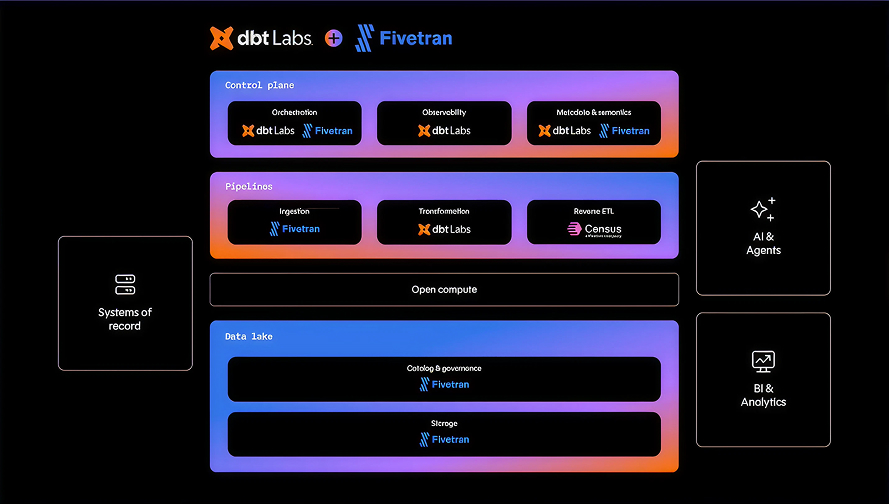As organizations explore ways to centralize data product management and empower collaboration, dashboard sprawl has become a recurring topic of concern.
Dashboards are great tools for telling stories with data, but they can quickly get out of hand. The discussion around BI dashboard proliferation reflects a growing recognition of the need for holistic data governance and strategic alignment.
In our recent webinar, Fivetran executives Veronica Zhai, Director of Analytics Product Management and Operations, and Kelly Carter, Lead Analytics Product and Operations Manager, joined Select Star Founder and CEO Shinji Kim to talk about how teams can manage dashboard sprawl, and what else they should consider when building and managing data products.
Key Roles of Data Product Managers
Data product managers wear several hats in most organizations. Their key responsibilities typically include:
- Data discovery and collection
- Data cleaning
- Data governance
- Business value
Data product management is about understanding how the system works, identifying revenue levers, and pinpointing bottlenecks. Meaningful conversations are needed to uncover not just what stakeholders want, but why they need it.
This becomes particularly challenging when dealing with non-technical stakeholders who may not grasp the full potential and impact of data-driven insights.
Data discovery and collection
Data product managers need a comprehensive understanding of their organization’s data landscape. This starts with knowing what types of data are available, such as core customer data, reference data, or financial data.
Data product managers are responsible for sourcing and collecting this data, collaborating with different teams to access the necessary sources. After identifying and collecting the relevant data, they centralize it, making it easily accessible for analysis and decision-making.
In traditional organizations not leveraging modern data tools, discovering, collecting, and centralizing data can be painstaking and time intensive.
Data cleaning
An abundance of similar dashboards with slightly different information can lead to confusion and inefficiency. That’s why it’s important to keep a clean data instance with a unique, consolidated reporting suite.
Data cleaning incorporates business logic into the data transformation process. This means applying domain-specific rules, calculations, or algorithms to the data to ensure it accurately reflects the business context.
Data governance
Achieving and maintaining the highest possible data quality is central to data governance. Care should be taken to ensure data is accurate, complete, consistent, and relevant for its intended use.
Data governance establishes standardized metrics and terminology across the organization. This facilitates communication, improves collaboration, and reduces misunderstandings and discrepancies in data interpretation.
To ensure access control and security measures are followed, data governance practices include defining permissions, establishing authentication mechanisms, and safeguarding sensitive information with encryption and data masking techniques.
Business value
What sets successful data product managers apart is their deep understanding of business dynamics.
These professionals have a keen awareness of the organization's goals, revenue drivers, market trends, and customer needs. By bridging the gap between data insights and business objectives, they translate raw data into actionable strategies that drive tangible value.
"Being a data product manager... is not about how many dashboards you build or how busy you are,” Veronica said. “It is really about understanding how the business works, understanding the revenue drivers and limitations of the company, and then building a product around that."
Managing Dashboard Sprawl
Effectively managing dashboard sprawl means defining public spaces, implementing popularity and usage-based product management, and adhering to relevance and utility requirements.
Defining public spaces
It is crucial to establish clear guidelines and boundaries for disseminating and owning data assets across an organization's public spaces.
Spaces in an organization can range from individual users to teams to the entire company, each with distinct data roles and responsibilities.
- Individual Spaces: At the individual level, users have autonomy over their data assets and dashboards. These may include personal analytics tools or ad-hoc reports tailored to individual needs and tasks.
- Team Spaces: Specific departments or project teams collaborate on assets and dashboards within a team space. These dashboards serve the collective objectives and workflows of the team.
- Public Spaces: The public or company-wide space contains data assets and dashboards intended for consumption across the organization. These dashboards are curated, maintained, and governed centrally to ensure consistency, accuracy, and accessibility for all stakeholders.
When data assets are designated for public consumption, the owning team or department assumes responsibility for their maintenance, troubleshooting, and enhancements.
By establishing criteria to determine which assets can be included in the public space, an organization can prevent sprawl and maintain clarity.
Limit public assets to those regularly used by at least one team. This prevents outdated and redundant dashboards from cluttering up the public space.
Popularity and usage-based product management
By tracking the percentage of dashboards that attract more than three non-analytics users per month, organizations can gauge the level of engagement and relevance of each dashboard. This offers a quantitative measure of dashboard popularity and effectiveness.
Dashboards failing to meet this threshold are flagged for review. Upon review, they may be optimized, consolidated, or deprecated.
This data-driven approach empowers organizations to prioritize resources, streamline their dashboard portfolio, and focus efforts on high-impact assets that resonate with users.
Select Star tracks the popularity of every column, schema database, and dashboard chart. This helps identify commonly accessed data fields, tables, or visualizations, enabling organizations to prioritize data modeling efforts, optimize data pipelines, and enhance data accessibility and usability.
New dashboard requirements
To ensure each dashboard contributes meaningfully to its objectives and the needs of its users, Fivetran asks two questions before approving any new dashboards:
- Is it unique and different?
- Is there a use for it?
If there is an existing dashboard already providing substantially similar information, it may be wiser to adapt that dashboard to display additional information than to create something brand-new and mostly redundant.
If the information in a dashboard has no real business value as displayed, and if no individuals or teams need to access this information quickly and regularly, there’s no need to create the dashboard. The individual data points should instead be incorporated into spaces where they can serve a greater purpose.
How to Tackle Dashboard Sprawl with Select Star
Addressing dashboard sprawl requires a comprehensive approach to data product management. With Select Star's innovative solutions and industry expertise, organizations can manage dashboards efficiently and confidently. Schedule a demo today to learn more.









